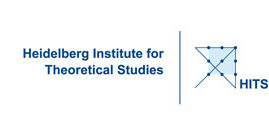 |
a Macromolecular Interface Navigator |
 |
 |
a Macromolecular Interface Navigator |
 |
MolSurfer can be used to study protein-protein
and protein-DNA/RNA interfaces. The 2D projections of the computed
interface aid visualization of complicated interfacial geometries in 3D.
Molecular properties, including hydrophobicity and electrostatic potential,
can be projected onto the interface. MolSurfer can thereby aid exploration
of molecular complementarity, identification of binding "hot spots" and
prediction of the effects of mutations. MolSurfer can also facilitate the
location of cavities at macromolecular interfaces.
MolSurfer can be run as an applet or as a stand alone program.
|
|
|
|
|
|
|
|
Additional demo
P450
substrate exit pathway demo
|
Indira Shrivastava for her contribution to preparing the set of protein-protein complexes; Susanna Luedemann for her permanent interest in MolSurfer; David Goodsell for an comment that triggered the idea to link 2D and 3D.
References
R.R. Gabdoulline, R.C. Wade & D. Walther (2003) MolSurfer: a macromolecular interface navigator, Nucleic Acids Research, 31, 3349-3351. abstract and full text R.R. Gabdoulline, R.C. Wade & D. Walther. (1999) MolSurfer: two dimensional maps for navigating three-dimensional structures of proteins, Trends Biochem. Sci., 24, 285-287 . (excerpt)
Application Examples
Hough MA, Hall JF, Kanbi LD, Hasnain SS. (2001) Structure of the M148Q mutant of rusticyanin at 1.5 angstrom: a model for the copper site of stellacyanin, Acta Crystallogr D, 57, 355-360. Luedemann SK, Gabdoulline RR, Lounnas V, Wade RC, Substrate access to cytochrome P450cam investigated by molecular dynamics simulations: An interactive look at the underlying mechanisms, Internet. J. Chem. (2001) 4, 6. (abstract) Campbell JD, Biggin PC, Baaden M, Sansom MSP (2003) Extending the structure of an ABC transporter to atomic resolution: Modeling and simulation studies of MsbA, Biochemistry, 42 (13), 3666-3673. Flaus A, Rencurel C, Ferreira H, Wiechens N, Owen-Hughes T (2004) Sin mutations alter inherent nucleosome mobility, EMBO Journal, 23, 343-353. Wang T, Tomic S, Gabdoulline RR, Wade RC (2004) How optimal are the binding energetics of barnase and barstar? Biophys J. 87, 1618-30. Huelsmeyer M, Chames P, Hillig RC, Stanfield RL, Held G, Coulie PG, Alings C, Wille G, Saenger W, Uchanska-Ziegler B, Hoogenboom HR, Ziegler A, (2005) A Major Histocompatibility Complex Peptide-restricted Antibody and T Cell Receptor Molecules Recognize Their Target by Distinct Binding Modes (A Major Histocompatibility Complex Peptide-restricted Antibody and T Cell Receptor Molecules Recognize Their Target by Distinct Binding Modes), J. Biol. Chem. 280, 2972-2980. Kövesi I, Schay G, Yonetani T, Laberge M, Fidy J, (2005) High pressure reveals that the stability of interdimeric contacts in the R- and T-state of HbA is influenced by allosteric effectors: Insights from computational simulations, Biochim Biophys Acta, 1764, 516-21.
MCMSOFT,
Rebecca Wade,
HITS gGmbH, Schloss-Wolfsbrunnenweg 35, D-69118 Heidelberg, Germany, http://www.h-its.org
European Molecular Biology Laboratory (EMBL), Meyerhofstr 1, D-69012 Heidelberg, Germany, http://www.embl-heidelberg.de
Dirk Walther
Incyte Genomics, Inc, 3169 Porter Drive, Palo Alto, CA 94304, USA
(c) 1999, 2003